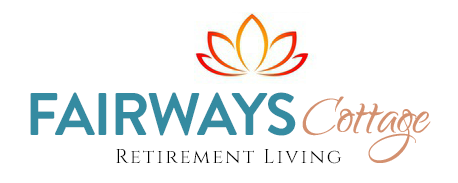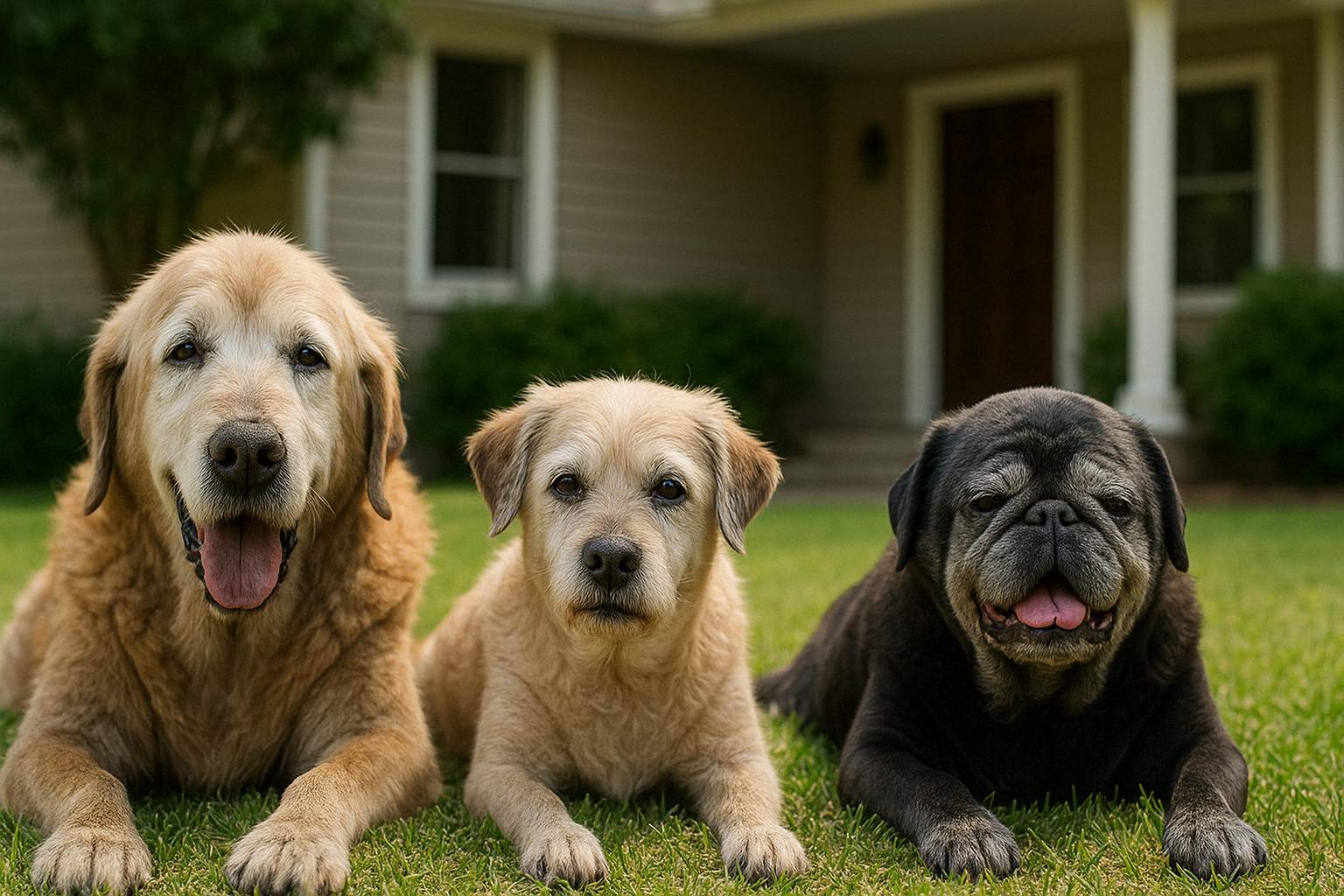Retirement Homes for Dogs: A Helpful Guide for Pet Lovers
“They never asked for much — just love, a warm spot to nap, and someone to stay by their side.”
I’ve seen far too many gray-muzzled dogs confused and heartbroken in shelters — left behind when age caught up with them. Maybe their person passed away. Maybe someone decided the vet bills were too much. Whatever the reason, it’s never the dog’s fault — and it never stops hurting.
Senior dogs are quiet heroes. They’ve stayed by our side through heartbreak, illness, and joy. They’ve watched over our children, sat by the door waiting for us to come home, and offered their loyalty without condition. They deserve better than to spend their final years alone or in pain.
This guide is about giving them that better ending — one filled with comfort, dignity, and love. Retirement homes for dogs are a growing answer to this need, and whether you’re preparing for your own dog’s next chapter or looking to help others, I’ll walk you through what you need to know.
Let’s make sure every good dog gets the golden years they’ve earned.
Understanding Dog Retirement Homes
When you hear “retirement home,” most people usually think of humans and not dogs. But more and more, these special places are opening their doors to aging pups who need gentle hands and quiet corners.
So what exactly is a dog retirement home?
Not everyone can take care of their elderly in their own home. Same is true for dogs. A dog retirement home is actually a long-term care facility designed specifically for senior dogs. Typically those who can no longer be adopted easily due to age, chronic illness, or special needs. Unlike a traditional shelter, which often focuses on adoption turnover, these homes focus on sanctuary. They’re built to be a final, loving chapter and not a pit stop on the way to some place else.
There are different types, too:
- Nonprofit Senior Dog Sanctuaries: Run by passionate volunteers, these rely heavily on donations and foster a deeply home-like environment. They often times take in dogs who’ve lost their owners or been abandoned late in life.
- Luxury Canine Retirement Resorts: Yes, they exist — complete with orthopedic beds, hydrotherapy pools, and 24/7 vet access. They cater to pet owners who can afford premium care when they’re no longer able to provide it themselves.
- Foster-Based Senior Programs: These place senior dogs in long-term foster homes where they receive one-on-one love and care. It works best for dogs who thrive in quiet, family-like environments.
- Hospice and End-of-Life Care Homes: These are focused entirely on comfort and provide palliative care to dogs nearing the end of life, making sure their final days are spent with dignity and warmth.
What ties all these options together is their mission: to give senior dogs a safe, loving place to grow old — without fear, without pain, and with all the belly rubs they want.
And let me tell you, once you see a blind, arthritic dog find peace on a sunny porch with someone who adores them… you’ll understand why these places matter more than most people realize.
The Importance of Retirement Homes for Dogs
Senior dogs are some of the most overlooked souls in the animal world. They’re not flashy. They don’t have puppy breath or endless energy. What they do have, though, is heart — a whole lifetime of it. And yet, far too often, that devotion is repaid with abandonment.
When older dogs lose their homes, they don’t bounce back the way young dogs do. They grieve. They ache. They don’t understand why their person is gone or why they’re suddenly surrounded by cold floors and strange smells. Traditional shelters, well they try their best, but they really aren’t built for the slow pace and complex medical needs of senior dogs. That’s where retirement homes step in.
These homes provide more than just shelter — they provide relief.
- Medical Attention: Senior dogs often deal with arthritis, vision loss, kidney issues, or diabetes. Retirement homes are equipped to manage these with regular vet checkups, medications, and specialized diets.
- Emotional Healing: Dogs mourn, too. In a calm, consistent environment, they begin to trust again. They settle into routines. They find new favorite humans.
- Dignity and Comfort: Aging shouldn’t mean isolation. Retirement homes offer soft beds, cozy blankets, and sometimes even canine massage or acupuncture — because comfort matters at every stage of life.
- Adoption Chances (Yes, Still Possible): Some seniors get lucky and find a new forever home. Retirement homes often serve as a gentle bridge — offering second chances when they’re least expected.
And perhaps most importantly, these homes remind us of something we humans sometimes forget: that love doesn’t fade with age. It deepens. It softens. It becomes something steady and sacred.
Every senior dog deserves that kind of ending.
Global Examples of Dog Retirement Homes
Across the world, quiet revolutions in compassion are taking shape — little havens where aging dogs are treated not as burdens, but as family. Let me share a few remarkable places that are doing this work right.
🐶 Marty’s Place – New Jersey, USA
Tucked into the countryside, Marty’s Place is a sanctuary for dogs aged seven and up. Each resident has their own room with a cozy bed, daily outdoor play, and plenty of human affection. Dogs here are never kenneled — they live freely, safely, and with purpose. Whether they stay forever or are adopted into new homes, one thing is certain: they’ll never be alone again.
🐾 Twilight – Dordogne, France
Twilight is a “retirement home for dogs” that feels more like grandma’s country cottage. Founded by a British couple who couldn’t bear to see old dogs suffer, it houses up to 30 senior dogs at any time. Some are blind, deaf, or disabled, but all are treated with the same loving care. The home runs on donations and heart — and trust me, it shows.
🐕 The Old Dog Home – Georgia, USA
Founded by a woman who simply couldn’t turn away an old dog in need, The Old Dog Home focuses on dogs deemed “unadoptable.” Many come in with trauma or advanced illness. They’re given medical treatment, homemade meals, and — most healing of all — consistent love. It’s not glamorous, but it’s real. And that’s what makes it beautiful.
🐩 Aeonpet’s Dog Retirement Home – Tokyo, Japan
In a bustling corner of Japan, you’ll find Aeonpet’s luxury canine retirement facility. It’s part hospital, part hotel — complete with hydrotherapy pools, gourmet meals, and round-the-clock medical staff. Though pricey, it reflects a growing trend in countries where pets are considered true family: offering them comfort and care, no matter the cost.
🏡 Thistle Hill Sanctuary – United Kingdom
This small but mighty sanctuary offers senior dogs a peaceful life in the British countryside. Every dog is treated with dignity, whether they have days or years left. They run through meadows, nap by wood-burning stoves, and are never short of a warm lap to lean into.
How to Choose the Right Retirement Home for Your Dog
Choosing a retirement home for your dog is a bit like choosing one for a loved one — because that’s exactly what they are. It’s not just about finding a place with kennels and bowls. It’s about finding a place where your dog will be seen, understood, and loved in their final years.
Here’s what I tell every family who asks:
🩺 1. Medical Support Matters — A Lot
Senior dogs often have unique health needs — arthritis, heart conditions, blindness, or incontinence. The facility should have regular veterinary access, not just in emergencies. Ask:
- Do they administer medications on a schedule?
- Do they offer on-site vet visits or work with a specific clinic?
- How do they handle chronic or terminal illnesses?
If they can’t speak confidently about these things, it’s a red flag.
🛏️ 2. Observe the Living Environment
Step into the facility and look around — really look. Is it clean, calm, and cozy?
- Are the dogs separated or packed together?
- Do they have warm bedding, space to move, and areas to rest without disturbance?
- Is there music playing, natural light, access to the outdoors?
A peaceful environment says a lot about how a place respects its residents.
🧍♀️ 3. Meet the Caregivers
These are the people your dog will spend their final days with — they should be warm, patient, and experienced.
- Ask about staff-to-dog ratio.
- Ask how long staff have been working there — high turnover isn’t a great sign.
- Watch how they talk to and about the dogs.
If someone talks about the dogs like they’re burdens, walk away. Fast.
📝 4. Ask the Hard Questions
Don’t be shy. This is your dog’s life we’re talking about.
- What’s their daily routine?
- What happens if your dog needs emergency care at night?
- Are families allowed to visit or stay involved?
A good home will welcome these questions — and give you honest answers.
💬 5. Read Reviews, Ask for References
You wouldn’t send a child to a school without checking reviews, right? Same here. Look for testimonials. Call a few past or current pet parents. Ask your vet for input. Real experiences tell the real story.
Preparing Your Dog for the Transition
Letting go — even a little — is never easy. And dogs, especially older ones, feel it just as deeply as we do. Preparing your dog for the move to a retirement home is as much about emotional care as it is about logistics. Here’s how to do it with grace, love, and a gentle hand.
🩺 1. Schedule a Full Health Check-Up
Before the move, get your dog in to see the vet. This gives you a clear picture of:
- Any medications the new facility should know about
- Special dietary needs or restrictions
- Ongoing or emerging conditions (like arthritis, dementia, or dental issues)
Ask your vet to share records directly with the home — and keep a copy for yourself.
🧸 2. Pack Familiar Items
Dogs are deeply scent-driven. Bringing their favorite blanket, a well-worn toy, or their usual food and water bowls can make an unfamiliar place feel a little more like home. Don’t underestimate the comfort of the “old smells.”
I once had a client send her dog’s retirement bag with one of her unwashed T-shirts. That old shirt became the dog’s security blanket until the very end.
🚗 3. If Possible, Visit Together First
If your dog is still mobile and the facility allows it, make a short visit before the big day. Let them sniff around, meet a caregiver or two, and maybe even enjoy a treat there. It’s a little like visiting a new school before the first day — it softens the unknown.
📋 4. Create a Personal Dog Dossier
This can be hugely helpful for caregivers. Include:
- Your dog’s daily routine (meal times, potty habits, nap times)
- Their personality quirks (“hates thunderstorms,” “loves belly rubs”)
- Favorite commands or words (“do you want a walk?”, “let’s go potty”)
- What soothes them when they’re anxious
The more caregivers know, the better they can love them like you do.
❤️ 5. Keep Your Goodbye Calm, But Loving
Dogs take their emotional cues from us. If you’re anxious, they’ll feel it. Speak calmly, offer your love, and reassure them that they’re safe. If it’s a permanent placement, don’t linger too long — but don’t rush out either. A steady, reassuring exit is better than a drawn-out tearful one.
Supporting Dog Retirement Homes
Not everyone can adopt a senior dog or run a sanctuary — but everyone can do something. These homes often run on donations, community goodwill, and volunteers with big hearts. If you’ve ever wondered how you can help give old dogs the golden years they deserve, here are meaningful ways to make a difference:
💵 1. Donate — Even Small Amounts Help
Most retirement homes operate on tight budgets. Medications, vet visits, food, heating, bedding — it all adds up fast.
- Consider monthly giving, even if it’s $10.
- Many homes post wish lists with specific needs (blankets, dog food, flea meds).
- Tribute donations (“in memory of Daisy”) are a beautiful way to honor your own pet.
And remember — recurring donations help more than one-time bursts. They help homes plan.
🐕 2. Sponsor a Senior Dog
Some facilities let you sponsor a dog. You’ll get updates, photos, and the warm knowledge that you’re helping that one sweet soul stay safe and cared for. It’s like long-distance god-parenting, with extra fur.
🧼 3. Volunteer Your Time or Talents
From cleaning kennels to walking dogs, every bit of help lightens the load. But even if you can’t be there in person, you might be able to:
- Build or maintain their website
- Help with grant writing or fundraising
- Create social media content
- Sew blankets or coats for cold nights
These sanctuaries need techies, writers, fundraisers, and organizers just as much as they need dog walkers.
📢 4. Spread the Word
Share their stories. Post about senior dog homes on your social media. Host a small fundraiser. Organize a supply drive with your child’s school or your book club. Awareness builds community — and community saves lives.
🏠 5. Consider Adoption — Or Fostering
Some retirement homes rehome dogs when possible. Others use foster networks to expand their reach. Even if you can only offer a few good months, to a dog who’s known none… you’ll change a life. And likely, your own.
Conclusion
If you’ve made it this far, then you’re my kind of person — someone who sees the soul behind the cloudy eyes and the worth in a wagging tail that wags a little slower these days.
Retirement homes for dogs aren’t just places. They’re promises. Promises that no dog will be forgotten because they’ve grown old and that age will never erase value. That loyalty will be met with comfort, not cold floors and empty bowls.
Whether you’re planning ahead for your own furry companion, supporting a sanctuary from afar, or just learning what’s possible — you’re doing something powerful. You’re giving voice to dogs who can no longer bark as loud, but who still have so much love left to give.
So here’s my gentle challenge to you:
Do something with what you’ve learned.
Visit a sanctuary. Share this post. Volunteer, donate, foster, or simply talk to a friend about senior dogs.
Because every old dog deserves to be somebody’s somebody — right up to the very end.
Share This Article:



